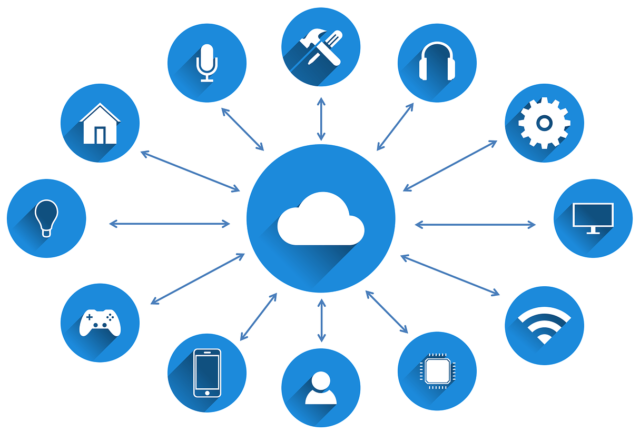What is the IoT (Internet of Things)?
The term “Internet of Things” – now commonly shorthanded as IoT – was coined in 1999 by British technologist Kevin Ashton.
It refers to a network of physical devices, vehicles, appliances, and other objects that are embedded with sensors, software, and network connectivity. These devices can collect and share data, enabling them to communicate with each other and with other internet-enabled devices.
IoT devices can range from simple “smart home” devices like smart thermostats, to wearables like smartwatches, to complex industrial machinery and transportation systems.
In an industrial setting, IoT devices are used to monitor a wide range of parameters such as temperature, humidity, air quality, energy consumption, and machine performance. This data can be analyzed in real time to identify patterns, trends, and anomalies that can help businesses optimize their operations and improve their bottom line.
IoT devices can also manage traffic patterns with smart cars, control machines and processes in factories, and track inventory and shipments in warehouses.
In the context of a residence, the Internet of Things is often referred to as a “smart home.”
A smart home is a specific application of IoT that focuses on home appliances and devices.
These devices, which include smart TVs, lights, thermostats, security systems, and even refrigerators, are connected to the internet and can be controlled remotely, conventionally by using a smart phone or tablet.
Here are some ways the IoT can benefit a residence: Home Automation. Control your lights, thermostat, and other devices with your phone. This means you can adjust settings even when you’re not at home. Energy Management. IoT devices can auto-adjust heating and cooling based on time of day or occupancy sensors, helping to reduce your energy bill. Home Security. You can control and monitor door locks and home security systems, and even connect automatically to police or fire responders. Home Maintenance. Smart devices can remind you when your air filters need changing, and alert you to plumbing leaks. Pet Monitoring. If you have a pet at home alone during the day, you can monitor and even interact with them using IoT devices.
Over time, as technology advanced and became more specialized, different types of IoT networks began to emerge, each tailored to specific applications or sectors.
For example, the IoMT is an acronym for the Internet of Medical Things and refers to a connected infrastructure of medical devices, software applications, and health systems and services.
Or, as another example, the IoBT stands for the Internet of Battlefield Things. The IoBT is used in military applications, where devices on the battlefield, such as vehicles, soldiers, and drones, are interconnected to improve situational awareness and decision-making.
This trend continues today as new technologies and applications are developed.
“What the Internet of Things is really about is information technology that can gather its own information. Often what it does with that information is not tell a human being something, it [just] does something.” - Kevin Ashton

